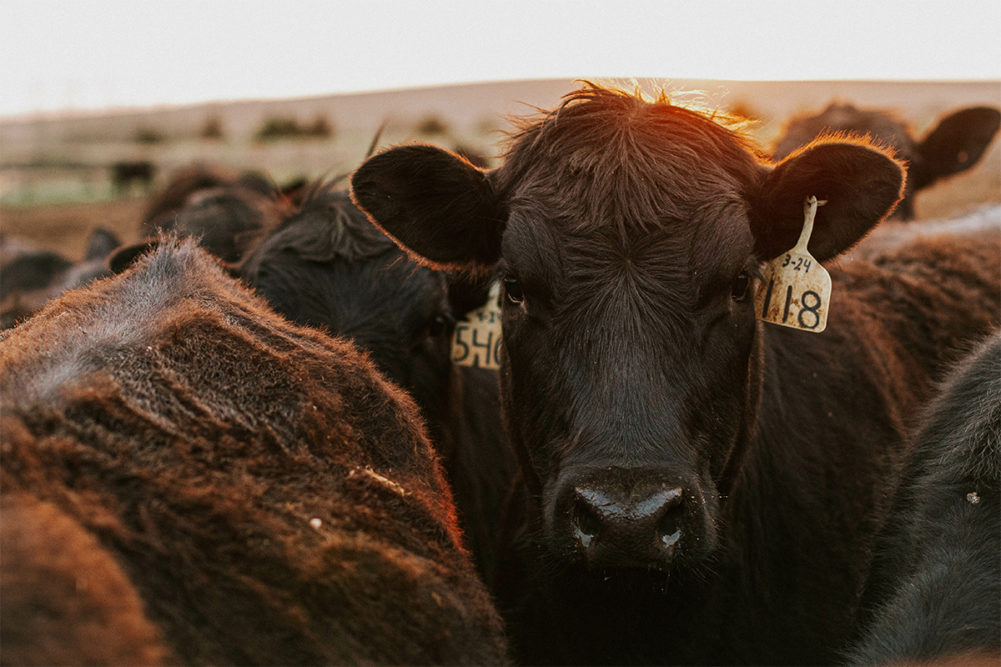In the five-plant fed beef survey 92% of the cattle had normal mobility. The Meat Institute’s lameness scoring system was used. The scores are: 1) normal, 2) slightly lame, and keeps up with other cattle when a group is walking, 3) more severe lameness and does not keep up with other cattle, 4) extremely reluctant to move. Most of the lame cattle were lameness score two. Many people in the industry are pleased with these lameness scores, however, 8% lame fed cattle is not something to be proud of. Twenty years ago fed cattle routinely had almost zero lameness scores. There are two factors that may have increased lameness. Cattle are now heavier at a younger age, and some of the cattle have poor leg and foot conformation. This is due to genetic selection for more meat traits.
The latest handling and transportation survey conducted by Lily Edwards-Callaway, PhD, associate professor of animal science at Colorado State University and her graduate students included good news and bad news for fed beef. Data was collected in five large, fed beef plants on 637 slaughter lots. The cattle were 89% Bos taurus with no visible Brahman characteristics, 8% Brahman characteristics and 3.6% black and white Holstein. The good news was that 86% of the trucks were unloaded within 60 minutes, which complies with the Meat Institute (formerly the North American Meat Institute) guidelines. The average waiting time was 30 minutes. The yard (lairage) had an average stocking density of 21.5 square feet and many cattle had more room.
Now for the bad news. Sixty-five percent of the cattle had multiple bruises and only 30% had zero bruises. It is likely that a high percentage of severe bruising occurred when tall cattle exited the bottom compartment of a pot trailer. Unfortunately, the simplified bruise scoring system that they used provided no location data. The four-point bruise scoring system was: 1) 0% bruises, 2) a bruise smaller than a deck of cards, 3) a bruise larger than a deck of cards, and 4) multiple bruises. An earlier survey of fed cattle by my former graduate student, Helen Kline, PhD, used a more detailed scoring system. She also collected her data in a plant with a slower chain speed. Many of the bruises were on the backs. The simplified bruise scoring was designed for plants with the highest chain speeds.
A second survey was conducted by Edwards-Callaway’s research group at a single large, fed beef plant. Over 400 cattle were individually identified and followed through the plant. Bruising was scored with the same simplified scoring system. This plant had much lower bruising, with only 30% of the cattle with multiple bruises. Lameness was much higher though, with 32% with a lameness score of two. Sixty-five percent of this plant’s cattle graded Choice, and 96% were under 30 months of age. Ninety-seven percent were Bos taurus and there were fewer cattle with visible Brahman characteristics. The average transportation distance averaged only 45 miles.
Fed cattle stress data
The stress hormone cortisol was measured when the cattle were bled. Cortisol levels will increase when animals are stressed. The heavier cattle had higher cortisol than the lighter cattle. Cattle that waited longer in the truck had higher cortisol and bruising was also associated with increased cortisol. This clearly shows the importance of prompt unloading. The good news is that the average cortisol level was only 22 ng/ml. I have reviewed many studies where cortisol levels have been measured during routine handling on ranches, feedlots, and packing plants. This is on the lower end of the range for cattle handling. The range of cortisol values from a number of farms and commercial slaughter plant studies range from the low 20s to the high 60s. There was one animal that had a high level of 77 ng/ml and the lowest value was 0.08 ng/ml. It takes 20 minutes for cortisol levels to peak after a stressful event. The animal with the high cortisol levels may have been highly agitated during handling.
Lactate is a simple blood test that can be easily used by plant personnel. Higher lactate levels were associated with longer waiting times to unload, heavier cattle, and hot weather. Earlier studies have shown that high lactate is also associated with cattle becoming agitated shortly before stunning.
Another positive outcome of this study is that handling at a slaughter plant has stress levels similar to on-farm handling. I get asked all the time, ‘Do cattle know they will get slaughtered?’ The cortisol data in this study indicated a low level of stress compared to other studies of handling on farms and slaughter plants.


